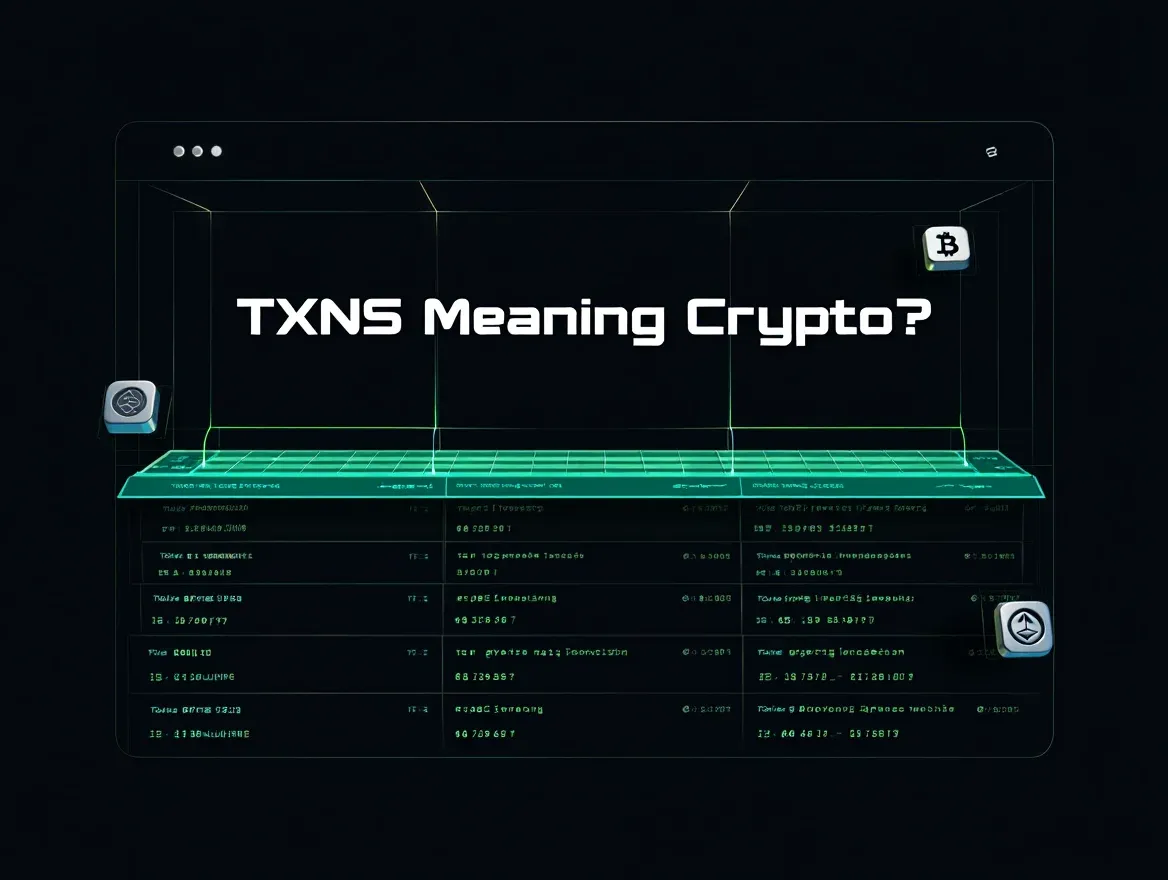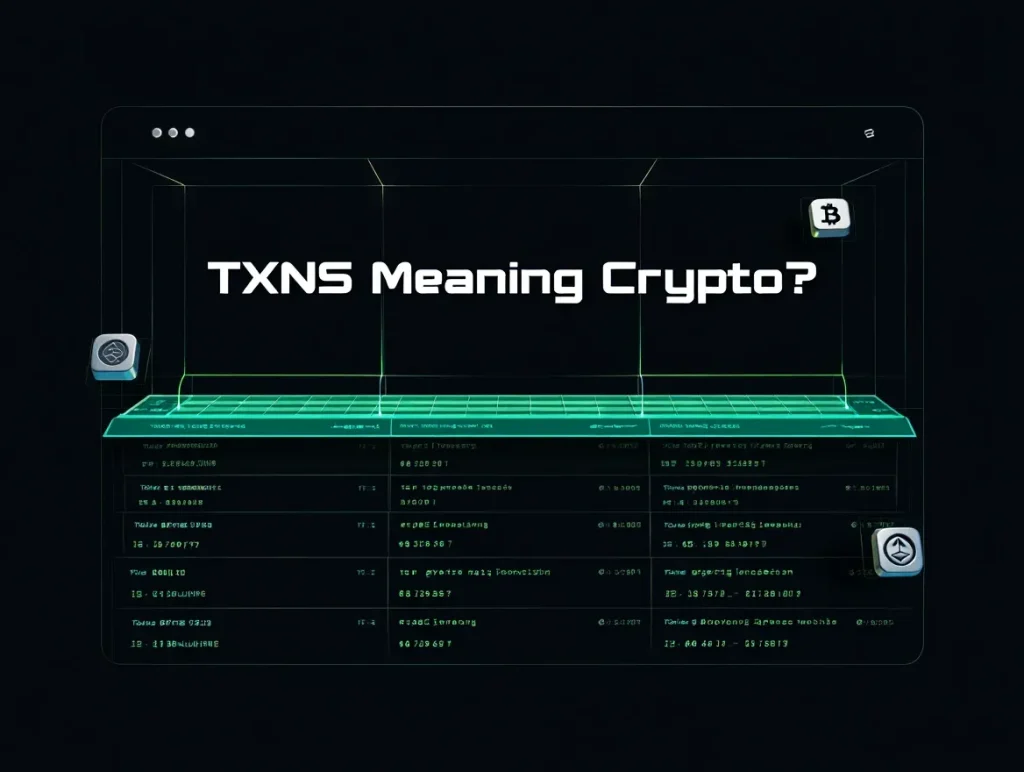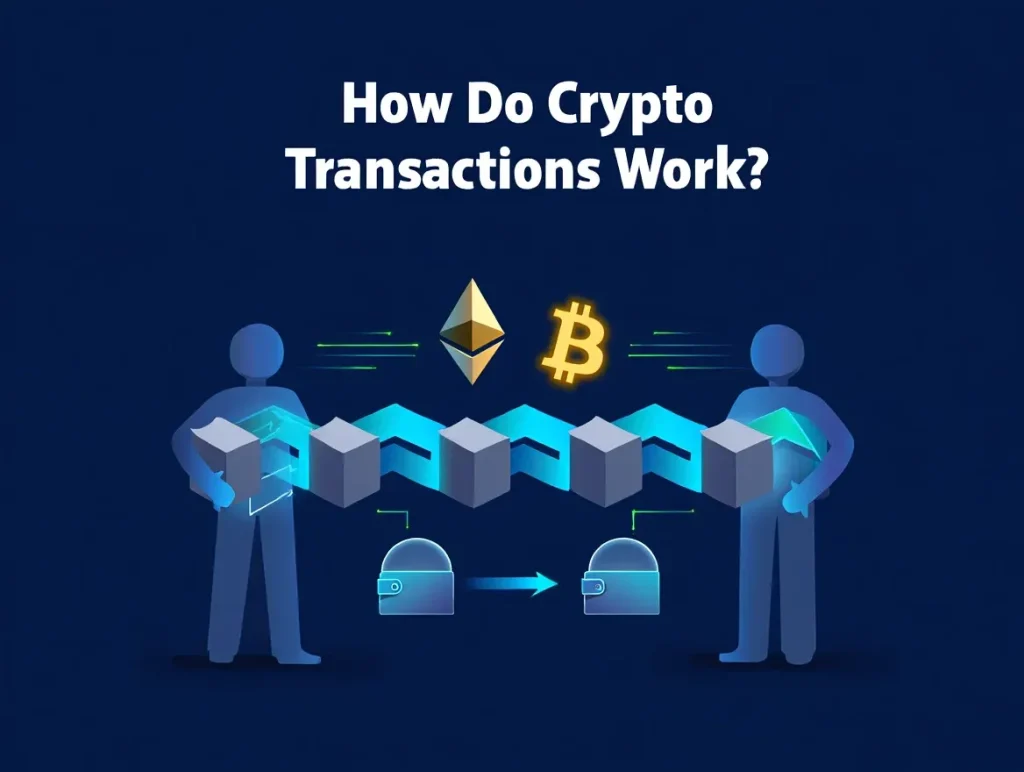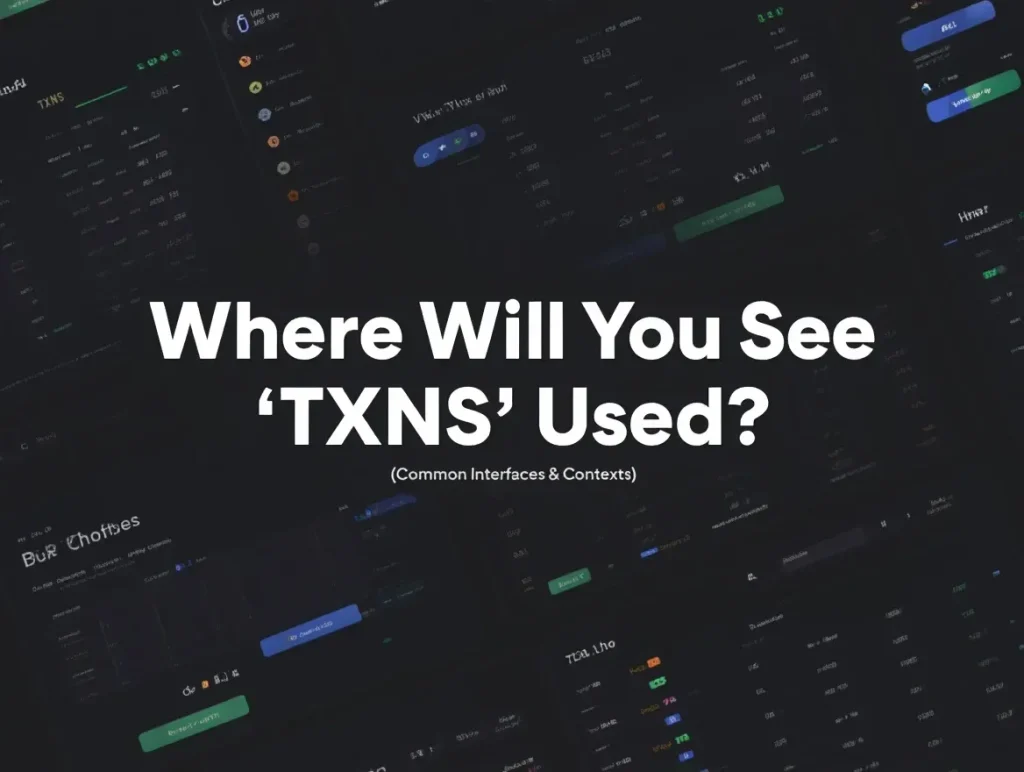Physical Address
304 North Cardinal St.
Dorchester Center, MA 02124
Physical Address
304 North Cardinal St.
Dorchester Center, MA 02124

Navigating the world of cryptocurrency can feel overwhelming for beginners, especially when faced with rapid-fire jargon like “txns,” “gas fees,” or block confirmations. Yet, learning the language of crypto is a crucial first step to transacting confidently and avoiding costly errors. Cryptocurrency, at its core, is a digital asset ecosystem built on blockchain technology, where transactions happen directly between users, often without intermediaries.
The purpose of this guide is to demystify the term “txns” and provide a clear, step-by-step understanding of how crypto transactions work in 2025. By mastering these basics, you’ll be empowered to handle crypto safely whether sending Bitcoin to a friend, swapping tokens on a DeFi platform, or tracking your trades on an exchange. Recent headlines have highlighted mix-ups due to misunderstood txns like users losing funds because they sent coins to the wrong network or selected the incorrect address.
One common scenario: A new investor opens an exchange app, sees a list labeled “recent txns,” and has no idea what’s being displayed. This guide aims to prevent that confusion by teaching you not just what txns are, but why they matter in every aspect of crypto activity. Let’s start by clarifying the core term.
TXNS is the widely used plural abbreviation for “transactions” within the cryptocurrency world. You’ll encounter it across crypto exchanges, wallets, blockchain explorers like Etherscan, mobile portfolio trackers, and even in trading news updates.

Some common appearances include:
| Abbreviation | Meaning | Context |
|---|---|---|
| TXNS | Transactions (plural) | Wallet, Exchange, Explorer |
| TXN | Transaction (singular) | Explorer, Logging |
| TX | Transaction (short form) | Developer Docs |
Understanding “txns” at a glance is your foundation for reading crypto interfaces and avoiding costly misinterpretations. With this in mind, let’s dig into what a crypto transaction actually is and how it’s different from what you might be used to in traditional finance.
A crypto transaction often labeled as TX, TXN, or Txns is simply the process of transferring value from one address to another on a blockchain network. This could mean sending Bitcoin to a friend, swapping Ethereum for a stablecoin, or using a smart contract in DeFi.
Analogy: Think of a crypto transaction as similar to a bank transfer: you move money from your bank account to another. But there are important differences:
| Feature | Traditional Bank Transfer | Crypto Transaction (TXN) |
|---|---|---|
| Processing | Bank approval required | Confirmed by blockchain nodes |
| Reversibility | Can be reversed/canceled | Usually irreversible |
| Transparency | Private, not public | Public ledger, visible to all |
| Speed | Minutes to days | Seconds to minutes |
Key roles of transactions on the blockchain:
Learning how txns power the blockchain will help you spot their importance, interpret your account history, and troubleshoot issues as you get more active in the crypto ecosystem.

What about fees and speeds?
Example: Sending 0.05 ETH from your wallet to a friend’s involves entering their address, approving a gas fee, and clicking send. You can then watch the txn appear as “Pending” on Etherscan (a popular blockchain explorer), and once added to the chain, it’s marked as “Confirmed.”
Understanding this multi-step transaction lifecycle is essential to interact securely and efficiently on the blockchain whether you’re swapping on DeFi, sending payments, or investing in crypto trends for 2025.
One of the most notable features of cryptocurrency is its blend of transparency and security. All txns are public and permanently recorded on the underlying blockchain, but privacy is maintained by masking identities behind wallet addresses. Here are the standout aspects:
Example: If you check an ETH transfer on a public explorer, you’ll see something like:
From: 0xabcdef… To: 0x123456… Value: 0.10 ETH Status: Success
No names, emails, or personal details are revealed.
This system means you benefit from unparalleled trust if you know a transaction’s hash, you can check its live status anytime. At the same time, individual privacy is maintained (unless someone publicly links their address to their real-world identity).
Related reads to deepen your knowledge:
The abbreviation “txns” is integrated throughout crypto tools and platforms once you recognize it, you’ll spot it everywhere:

| Interface | How TXNS is Displayed |
|---|---|
| Etherscan.io | “Latest Txns” |
| Binance Wallet | “Pending Txns: 3” |
| CoinMarketCap | “Txns per Second” stats |
Spotting “txns” in these interfaces helps you interpret transaction status, monitor for errors, and make smarter choices especially as blockchains and DeFi platforms evolve throughout 2025.
| Term | Full Form | Meaning | Where You’ll See It |
|---|---|---|---|
| TX | Transaction | Single crypto transaction | Block explorers, dev docs |
| TXN | Transaction | Alternate short form | Wallets, APIs |
| TXNS | Transactions | Plural form – multiple transactions | Exchanges, explorers, news |
| Fee / Gas | Transaction Fee / Gas | Cost paid to process transaction | Every blockchain |
| Hash | Transaction Hash | Unique txn ID, trackable online | Explorers, receipts |
| Confirms | Confirmations | Blocks since inclusion in chain | Explorers, wallet status |
| Pending | Unconfirmed Txn | Not yet on blockchain | Wallets, explorers |
| Block | Blockchain Block | Group of txns recorded together | Explorers, dev tools |
This glossary forms a quick reference, making it easy to decode transaction screens, read guides, and ask for help in forums as you deepen your crypto literacy.
What data does a typical crypto txn include?
A crypto transaction contains details like the sending and receiving addresses, token type and amount, transaction fee, a unique hash (ID), and a timestamp. On public blockchains, all this information is viewable using the transaction’s hash on a block explorer.
Are crypto txns reversible?
No. Once confirmed on most blockchains, transactions are irreversible. If you send assets to the wrong address or wrong network, recovery is usually impossible unless the recipient sends them back manually one reason double-checking is vital.
How long do txns take? What determines the speed?
Speed depends on blockchain design and network congestion. For example, a Bitcoin transaction usually takes 10+ minutes, but during busy periods it can take longer. Ethereum and Layer 2 chains (like Arbitrum) are typically faster, ranging from seconds to a few minutes, especially with higher gas fees to prioritize your txn.
What are failed or pending txns?
A pending txn is waiting to be included in the next block delays often signal network congestion or a too-low fee. A failed txn occurs when a transaction can’t be processed (e.g., due to insufficient gas or a network error); you’ll see this indicated on wallets and explorers.
Do all blockchains handle txns the same?
No. Each blockchain has its own confirmation logic, transaction structure, and fee model. For instance, Ethereum uses “gas” to prioritize txns, while Solana handles thousands per second at ultra-low cost. Always check the specifics of the blockchain you are interacting with.

Applying these best practices is your best defense against avoidable errors and potential crypto fraud, especially as usage spikes amid bullish 2025 forecasts.
If you want to take your knowledge beyond the basics of TXNS, several top resources, courses, and communities offer unbiased, in-depth blockchain education:
Consistent engagement with these sources will boost your blockchain literacy, keep you up to date with crypto trends in 2025, and help you stay safe as the technology evolves.
10.1 Boolean:
Are crypto txns anonymous?
No crypto transactions are pseudonymous. All transaction details are public, but identities are masked behind wallet addresses.
10.2 Definitional:
What is “gas” in Ethereum txns?
“Gas” is the transaction fee you pay to perform operations (like sending ETH or using smart contracts) on the Ethereum network. It compensates validators for processing your transaction.
10.3 Grouping:
Which blockchains support the fastest txns?
Blockchains like Solana, Avalanche, and Polygon (Ethereum Layer 2) enable thousands of transactions per second and are currently the fastest in mainstream use.
10.4 Comparative:
How do Bitcoin txns compare to Ethereum for speed and cost?
Bitcoin transactions are often slower (10+ minutes) and can cost more at peak times. Ethereum is generally faster seconds to a few minutes but can become expensive during periods of network congestion. Layer 2 Ethereum solutions offer both lower costs and quicker confirmations.
Understanding “txns” from what the abbreviation means to how transactions work under the hood is essential for crypto users in 2025 and beyond. By mastering the key terms, safety practices, and the transaction process itself, you’ll be well-equipped to navigate crypto wallets, exchanges, and blockchain explorers with confidence. The crypto world moves fast, but knowledge is your best hedge against error and loss. For ongoing updates and deeper dives, be sure to bookmark reputable educational sources and always practice vigilant transaction safety. Welcome to a new chapter in your crypto journey where informed txns are the first step to smart investing and security.
At Webtaichinh, our mission is to provide you with clear, unbiased insights into the world of cryptocurrency through the Cryptocurrency category, helping you navigate complex topics with confidence, without hype or hidden agendas.
Webtaichinh delivers real-time financial updates, ensuring you stay informed about market trends, policies, and global economic developments. As part of our commitment to excellence, we provide accurate information and in-depth analysis, empowering investors to make swift, confident decisions in a dynamic financial world.
For inquiries or personalized assistance, feel free to contact us:
📞 Phone: 055 937 9204
📧 Email: webtaichinh@gmail.com
💻 Website: https://webtaichinh.vn/
📍 Address: 13 Ho Tung Mau, An Binh, Di An, Binh Duong
At webtaichinh, your financial success is our mission.